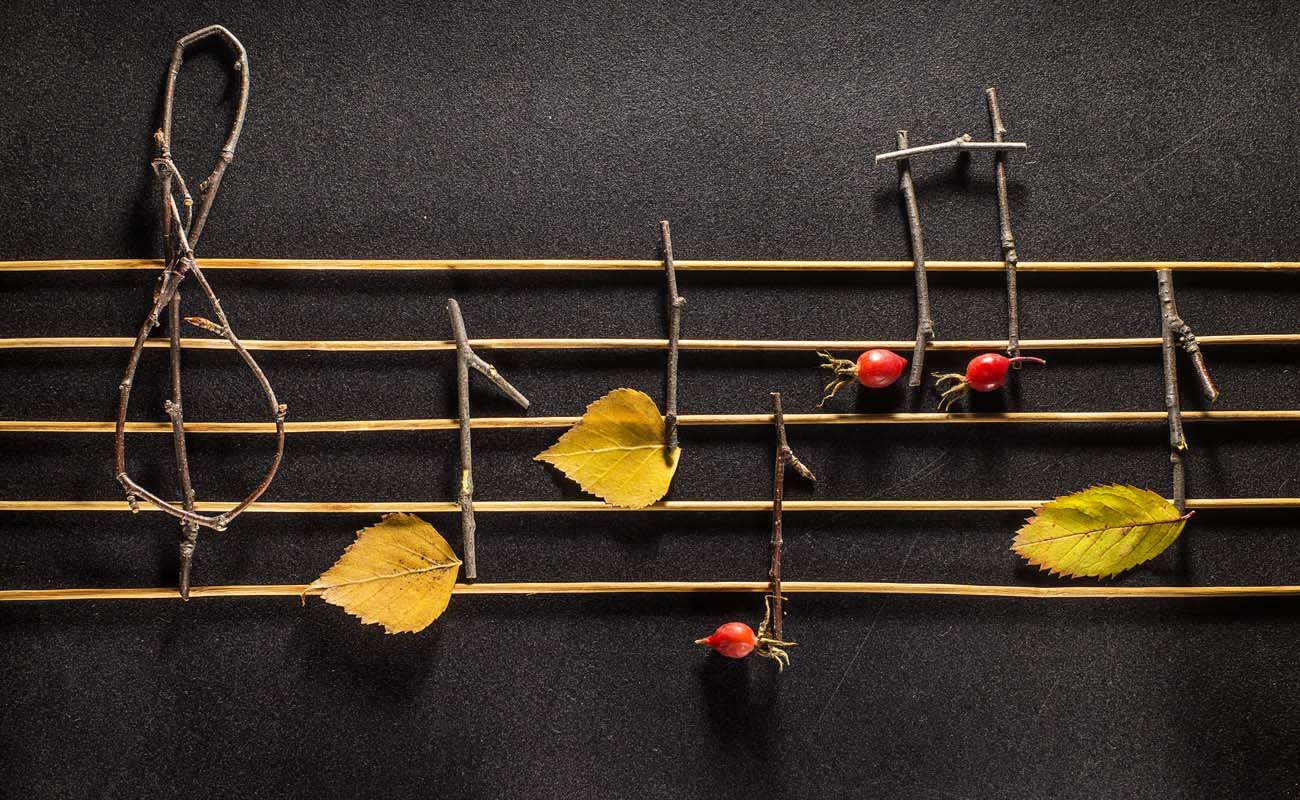My nephew once asked his father what an artist is, to which he replied ‘one who creates art’, ever the accurate literalist that my brother is. All the wise chin scratching and beard stroking could not answer the inevitable follow up question of ‘what is art?’. With all due respect to my inquisitive little nephew, a more answerable, and probably more interesting, question to posit is ‘how is art made?’. More specifically, my interest is in who is, and how are they, involved in the creative process, and whether this notion that the creative process can be a solitary one should be interrogated.
In music, one could be forgiven for thinking of art-making as one of the so-called great composers sitting by candlelight, perhaps in an attic, furiously scribbling in their manuscripts. Their solitary and noble pursuit of musical perfection is a gift not to them but to those lucky enough to hear or play their creation. Heaven forfend should someone interrupt their creative process! In reality, this notion of the composer-genius is a collective hangover we have from the romantic era ideals that persisted through the twentieth century to contemporary culture (Hunter, 2007). I think of the oft trotted out line from Beethoven regarding violinist Schuppanzigh’s response to his late string quartets, ‘do you think I’m thinking of your miserable fiddle when I’m talking to my God?’. Research carried out in recent decades shows that a network of practitioners influence the aesthetic of the creative process, which challenges the view of the creator as a distinct role from those they interact with (John-Steiner, 2000). In other words, forget the poet, painter, choreographer or filmmaker for a moment; what about the editor, curator, philanthropist, publisher or spouse?!
A cursory search of musicological publications in this area will show the preponderance of score analysis as the basis for investigating the creative process, and perhaps rightly so. Sketches and manuscripts can reveal much about the compositional process, structurally, thematically, chronologically and so forth. So it was no surprise to me that widely held views of Benjamin Britten’s Nocturnal after John Dowland (1963) for solo guitar were also based on that approach. Nocturnal is a work very dear to classical guitarists. A single movement twenty-minute masterpiece, it is probably the only work written for solo guitar by a truly great composer. It is written in a type of reverse variation form; a performance of the work moves through variations on John Dowland’s Come Heavy Sleep peeling away layers of Britten’s adaptations to expose the hauntingly beautiful and melancholic sixteenth-century song on which the work is based. Britten’s reputation for diligently studying the technicalities of the instruments for which he is writing meant that scholars were not surprised that the manuscript and sketches are identical to the published score – supposedly indicating that the work was not altered when it was presented to the performer to prepare it for the premiere, which is typical. This bucked the trend of a collaborative approach to composition for guitar (with the exception of those composers who happen to also be guitarists). Even Berlioz once famously said that ‘it is impossible to write well for the guitar without being able to play it’ (1948 [1844]: 145). The cynic in me wanted to have a look at Britten’s writings myself.
The Britten-Pears Foundation houses scores, manuscripts and other written materials pertaining to the careers of Benjamin Britten and tenor Peter Pears. It is housed in the idyllic sleepy town of Aldeburgh on the coast of Suffolk in the ‘Red House’ where they had lived. Luckily, that was only a couple hours on a train from where I lived in London, when I first became interested in these sources. Looking through the letters between guitarist Julian Bream (commissioner and first performer of Nocturnal) and Britten revealed an intimate and trusting relationship between the two that spanned decades (this is common knowledge though the musical discussions are a fascinating read, all the same). One letter in particular drew my attention. Britten wrote asking a rudimentary question about left hand technique of Bream (asking can notes be fretted on the first and sixth strings in double octaves, leaving the inner strings to ring… for those that care!). This was a bit of a revelation given that Britten supposedly wrote twenty minutes of music without requiring technical consultation. It suggests that Britten was not as au fait with guitar technique as is assumed and thus might have required an in depth consultation with Bream. (It is made all the more curious given he had written a twelve-minute song cycle Songs from the Chinese for Pears and Bream in 1957.) So, the question arises as to whether Britten the one ‘great’ composer who could write for guitar or is it more likely that he was selective as to which materials would be kept that show the creative process in full? Answers on a postcard.
An element of collaboration in composition probably applies to many instruments. The celebrated French horn player Dennis Brain premiered Britten’s Serenade for Tenor Horn and Strings (1943). Like Nocturnal, the manuscript and related materials were identical to published scores. However, in an obituary following Brain’s tragic death from a car accident, Britten stated that ‘[Brain’s] help was invaluable in writing the [Serenade]; but he was always most cautious in advising any alterations. Passages which seemed impossible even for his prodigious gifts were practised over and over again before any modifications were suggested, such was his respect for the composer’s ideas’ (Britten, 1958). It appears to me that Britten was no exception to the rule that where technical consultation is a requirement, compositional collaboration might ensue.
What about after the score is written? Music making can, and should be regarded as the actualization of music in tones, rather than the mere creation of the score. Music is sound and experiencing its performance is social. Vygotsky argued in his Psychology of Art (1925) that,
art is the social within us, and even if action is performed by a single individual, it does not mean that its essence is individual… Art is the social technique of emotion, a tool of society which brings the most intimate and personal aspects of your being into the circle of social life. It would be more correct to say that emotion becomes personal when every one of us experiences a work of art. It becomes personal without ceasing to be social.
Situating the experience of art as a social construct and social bond between composer, performer and audience member is key—the work is performed by all three of these individuals or groups. Collingwood argued a similar point, noting that the insufficiencies of the written medium necessitate that human input, here focusing on the performer but also recognising other contributors to the creative process.
The book of a play or the score of a symphony, however cumbered with stage-directions, expression-marks, metronome figures, and so forth, cannot possibly indicate in every detail how the work is to be performed. [The playwright or composer] demands of his performers a spirit of constructive and intelligent co-operation. He recognizes that what he is putting on paper is not a play or a symphony, or even complete directions for performing one, but only a rough outline of such directions, where the performers, with the help, no doubt, of producer and conductor, are not only permitted but required to fill in the details. Every performer is co-author of the work he performs (Collingwood, 1938: 320-1).
I think most will agree that all art forms are to some degree a performed social interaction. Like the play or score or poem, even a painting hanging in the exhibition is, in essence, a documented performance, a voice reaching out to those in the gallery. What I put to you in this blog post is that artistic creation is also social as it is influenced by our interpersonal experiences, motivations and relationships. Britten is my own little case study to illustrate this point. Art making and art performing are component parts of the one creative act. As such, we need to do away with the idolizing and mythologizing of the artistic genius, recognising instead that while some undoubtedly possess great skill and aptitude, the creative act is distributed.
References
- Berlioz, B. (1948) [1844] Treatise on Instrumentation. by Front, T. New York: Calmus.
- Britten, B. (1958) Dennis Brain (1921-1957), Tempo, 46, 5-6.
- Clarke, E. and Doffman, M. (2017) Distribute Creativity: Collaboration and Improvisation in Contemporary Music. Oxford University Press.
- Collingwood, R. G. (1938) The Principles of Art (Vol. 11). Oxford University Press.
- Hunter, M. (2005). “To Play as if from the Soul of the Composer”: The Idea of the Performer in Early Romantic Aesthetics. Journal of the American Musicological Society, 58(2), 357–398.
- John-Steiner, V. (2000) Creative Collaboration. Oxford University Press.
- Vygotsky, L. (1971) [1925] The Psychology of Art. New York: MIT

